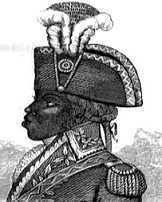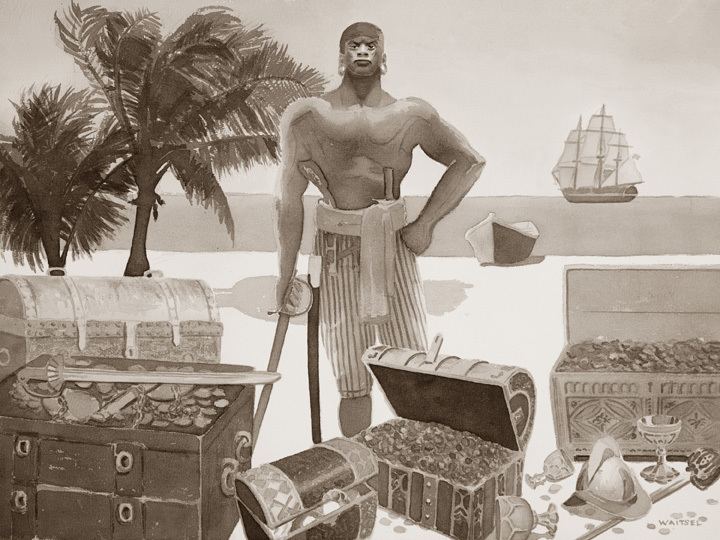Type Pirate Name Black Caesar | Rank Captain Years active 1700s-1710s Role Pirate | |
 | ||
Died 1718, Williamsburg, Virginia, United States | ||
Black caesar black pirate 1600 1700s
Black Caesar (died 1718) was an 18th-century African pirate. For nearly a decade, he raided shipping from the Florida Keys and later served as one of Captain Blackbeard's, a.k.a. Edward Teach's, crewmen aboard the Queen Anne's Revenge. He was one of the surviving members of Blackbeard's crew following his death at the hands of Lieutenant Robert Maynard in 1718. Caesar's Rock, one of three islands located north of Key Largo, is named in his honor, and is the present-day site of his original headquarters.
Contents
- Black caesar black pirate 1600 1700s
- Captain black caesar
- Biography according to legend
- In popular culture
- References

Captain black caesar
Biography according to legend

Black Caesar, according to traditional accounts, was a prominent African tribal war chieftain. Widely known for his "huge size, immense strength, and keen intelligence", he evaded capture from many different slave traders. Caesar was finally captured when he and twenty of his warriors were lured onto a ship by a slave trader. Showing him a watch, the trader promised to show him and his warriors more objects which were "too heavy and too numerous to bring on shore" if they came aboard his ship. He enticed them to stay with food, musical instruments, silk scarves and jewels, however he had his men raise anchor and slowly sail away. When Caesar discovered what was happening, he and his men attempted to charge their captors but were driven back by the well-armed sailors using swords and pistols. Although it took a considerable length of time for him and his warriors to accept their captivity, he was eventually befriended by a sailor who was the only man Black Caesar would accept food and water from.

As they neared the coast of Florida, the sudden appearance of a hurricane threatened to destroy the ship on the Florida Reefs. Recognizing the ship's imminent destruction, the sailor snuck below decks and freed Caesar. The two then forced the captain and crew into a corner, most likely at gunpoint, and boarded one of the longboats with ammunition and other supplies. The wind and waves pushed them to shore where they waited out the storm, apparently the only survivors of the doomed ship.
They soon began using the lifeboat to lure passing ships which stopped to give assistance. While posing as shipwrecked sailors, they would sail out to the vessel offering to take them aboard. Once they were close to the vessel, they brought out their guns and demanded supplies and ammunition, threatening to sink the ship if they were refused. He and the sailor continued this ploy for a number of years and amassed a sizable amount of treasure which was buried on Elliott Key. However, he and the sailor had a falling out over a young woman the mate had brought back from one of the ships they had looted. Fighting over her, Caesar killed his longtime friend in a duel and took the woman for his own.
He began taking on more pirates over time and soon was able to attack ships on the open sea. He and his crew were often able to avoid capture by running into Caesar Creek and other inlets between Elliot and Old Rhodes Key and onto the mangrove islands. Using a metal ring embedded in a rock, they ran a strong rope through the ring, heel the boat over, and hide their boat in the water until the patrol ship or some other danger went away. They might also lower the mast and sink the ship in shallow water, later cutting the rope or pumping out the water to raise the boat and continue raiding. It is thought that he and his men buried 26 bars of silver on the island, although no treasure has ever been recovered from the island.
He apparently had a harem on his island, having at least 100 women seized from passing ships, as well as a prison camp which he kept prisoners in stone huts hoping to ransom them. When leaving the island to go on raids, he left no provisions for these prisoners and many eventually starved to death. A few children reportedly escaped captivity, subsisting on berries and shellfish, and formed their own language and customs. This society of lost children give rise to native superstition that the island is haunted.
During the early 18th century, Caesar left Biscayne Bay to join Blackbeard in raiding American shipping in the Mid-Atlantic serving as a lieutenant on his flagship Queen Anne's Revenge. In 1718, after Blackbeard's death battling with Lieutenant Robert Maynard at Ocracoke Island, he attempted to set off the powder magazine as per Blackbeard's instructions. However, Caesar was stopped by one of the captives who tackled him as he prepared to light a trail of gunpowder leading to the magazine. He struggled with the man below decks until several of Maynard's sailors were able to restrain him. Taken prisoner by Virginian colonial authorities, he was convicted of piracy and hanged in Williamsburg, Virginia.
